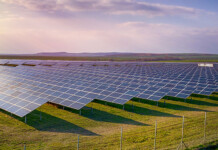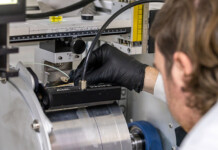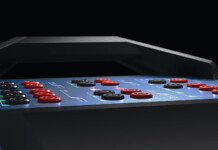By Phil Kreveld
It’s Sunday, September 21, and the ABC’s Insiders host, David Speers, is in New York getting the sales pitch from Climate Change and Energy Minister, Chris Bowen, who is there to announce Australia’s ambitious carbon reduction target to the United Nations General Assembly.
Will 82% renewable electricity generation by 2030 go to 90%, or what percentage has the Minister in mind for 2035? The range of 62 to 70% being the overall emission reduction relative to 2005 is the target he will spruik at the UN during the week. What’s in store for electrical energy? Bowen leaves the answer to markets—the ‘invisible hand’ would do the heavy lifting. Oh yes, and Dr Tim Nelson’s new market designs will help congeal market-inspired investment into the ‘right areas’ but without specific targets, Bowen says. And also, prices of electrical energy would go down because there is nothing cheaper, Bowen tells Speers. If nothing else, the confidence of the Minister is appealing—and also concerning!
Related article: Cut emissions 70% by 2035? Only one policy can get us there
Plenty of reasons for more than a bit of worry as experience to date indicates the Australian renewable transition is at once a brilliant success (South Australia) and a succession of hold-ups (wind projects blown away) and agitation against new transmission projects. It’s not an Aussie phenomenon, of course—just look at the USA. But we are a small show with less than 30 million people and an electricity sector owned by relatively few investors—basically an oligarchic show, restrained by the regulatory folk; not exactly an ideal climate for engineering innovation. And it’s the engineering bias that has to deliver the transition but is bound up by constraints seen as vital to minimising risk of grid breakdowns. It is a familiar story but as the balance of this article mentions, we are caught in a classic dilemma. The new stuff works but we haven’t seen it work all by itself as 100% new technology, with the old, a distant memory. Therefore, proceed with great caution—and we do.
When one flicks through the Australian Energy Market Commission’s connection rules for new generators, confidence returns. It is all laid out neatly and thoroughly—ditto, perusing the Australian Energy Market Operator’s procedures for verifying the performance characteristics of new generators. Experience shows, though, that the speed of connection approvals is slow—because of a very cautious approach of ‘do no harm to the grid’. The wind and solar generators, and the battery-connected inverters, though subject to a rigorous examination regime in order to gain connection approval, remain not well understood other than their behaviour in largely synchronous grids.
Let’s flesh out that behaviour. The big worry is about what happens in grids when only asynchronous sources of energy are connected because the salient features of such a grid are the sudden changes in electrical power being demanded, courtesy of rooftop solar, and being generated elsewhere. Unlike the days of yore when analysis of synchronous systems and no self-generation in distribution networks, yielded to so-called ‘root mean square’ (rms) analyses, that would no longer be the case. In grids subject to fast disturbances, we have to turn back to solving time-based linear and even non-linear differential equations (depending on the magnitude of disturbances).
Related article: Things we can do today to meet Australia’s new climate goal
The new gear presenting for its AEMO exams required before connection, comes with little circuit detail (proprietary info), mainly with block diagrams—and with ‘transfer functions’. These mathematical formulas indicate how the solar or battery inverter or wind generator processes changes to external commands and to transmission line conditions. The required mathematical functions are based on Laplace variables (basically transformed frequency variables). Compilers change these variables to so-called state-based variables (differential equations), and then the gear to be tested can be subjected to all kinds of transients, mimicking behaviour under stressful conditions. AEMO is expert at testing those state-based models in its state-based grid parallel universe but is well aware that its ‘test bench’ is not a complete parallel universe of the poles and wires outside its door. It is truly interesting stuff for propeller heads but—it leaves room for plenty of surprises because what is not being modelled is a 100% asynchronous grid.
The day will come when the level of understanding of the inverters and wind generator realms will be ‘complete’ in the same way as for synchronous machinery today, but it is in all likelihood much further away than the Climate Change and Energy Minister might expect. It will leave a large time gap for anti-renewable warriors to sell their message. Speeding up confidence levels in heading for 90% renewables, cannot happen unless the whole process is part of a wholistic engineering design effort. And there’s the problem. Leaving it up to the individual players in the energy markets, both the AEMC and AEMO will see to slowing the integration of renewables process in the interest of grid security. Inasmuch as the 2035 CO2 emission target critically depends on renewable generation, there will be unavoidable ‘stressing’.







